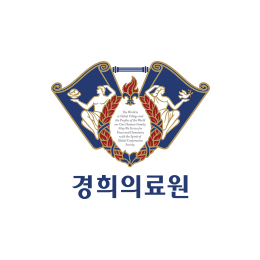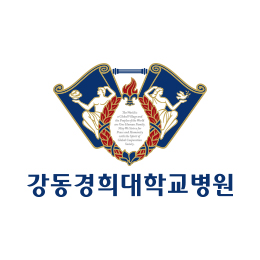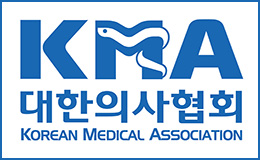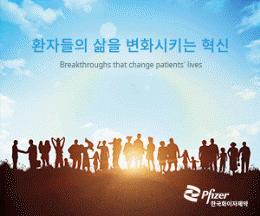. Background
The International Health Regulations or the IHR (2005) are a global legal framework to protect global health security. All Member States are required to develop the minimum core capacities to detect, assess, report and respond to acute public health events and emergencies. In the Western Pacific Region, the Asia Pacific Strategy for Emerging Diseases (APSED) has been developed to guide Member States to achieve IHR (2005) core capacities since 2005. The APSED has recently been upgraded as the Asia Pacific Strategy for Emerging Diseases and Public Health Emergencies (APSED III) and was endorsed by the Regional Committee Meeting (RCM). APSED III serves as the common regional framework for action to guide all Member States to advance IHR for health security.
The Republic of Korea is fully committed to meeting the IHR (2005) requirements to protect health security. The country is the fifth Member State in the WHO Western Pacific Region to participate in the voluntary JEE, and the first developed country in the region to undergo this process. APSED III is becoming more relevant even for developed countries such as the Republic of Korea, especially following the Middle East Respiratory Syndrome (MERS) outbreak in 2015. Many international and regional initiatives have emerged in recent years to further support the implementation of the IHR (2005) to protect global health security, including the Global Health Security Agenda (GHSA) launched in 2014 where the Republic of Korea is the current chair of the steering group in 2017.
The IHR Joint External Evaluation (JEE) is one of the core components of the IHR monitoring and evaluation framework, moving from exclusive self-evaluation to joint internal and external evaluation to assess IHR capacities. JEE provides a unique opportunity for national and international collaboration and multi-sectoral teamwork within the country. This report is the product of the JEE in the Republic of Korea and summarizes the evaluation findings and recommended priority actions for the 19 technical areas in the JEE tool.
The JEE process started with a self-evaluation overseen by the Korea Centers for Disease Control and Prevention (KCDC) JEE Taskforce which was established by the Ministry of Health and Welfare (MOHW) in March 2017. Over a 6-month period, the JEE Taskforce worked collaboratively to compile all the information and supporting documents required by the JEE tool to prepare a comprehensive self-assessment report. This was a substantial multi-sectoral effort bringing together ten core ministries through three working-level review meetings, two workshops, as well as numerous consultations with additional ministries. From 27 August to 1 September 2017, the JEE mission took place in the Republic of Korea, where a multi-sectoral team of international and national experts jointly conducted a review of the Republic of Korea’s IHR core capacities in the 19 technical areas using the JEE tool.
Main findings
The JEE team was highly impressed by the Republic of Korea’s outstanding effort to prepare for the JEE. It is evident that the Republic of Korea put in considerable time, energy and thought into the preparation of a high-quality self-assessment report, presentations of the technical areas, and the well-planned site visits to demonstrate system functioning. The JEE team unanimously agreed that the Republic of Korea has highly sophisticated systems and capacities in place to address emerging and re-emerging infectious disease threats and public health emergencies. Across the different technical areas, the JEE team noted the Republic of Korea’s significant achievements in establishing a comprehensive set of legislation, cultivating a strong culture of conducting exercises, and applying innovative technology to public health.
The JEE team assessed the Republic of Korea’s IHR core capacities using the JEE tool, and categorized the majority of the indicators as having sustainable capacity (60.4%) and demonstrated capacity (31.3%), with 8.3% categorized as having developed capacity. However, although the Republic of Korea has achieved high scores, the JEE team cautions on the danger of becoming complacent, as this level of capacity can only be sustained with continued multi-sectoral effort and stable investment in the core public health functions supporting health security.
The MERS outbreak was a major trigger that resulted in 48 reforms to enhance the country’s ability to prevent, detect, and respond to emerging infectious disease threats and public health emergencies. The JEE team wishes to commend the Republic of Korea for translating their lessons learned from this event into concrete actions, not only revising the legislations but expediting funding and implementing the legislations. The dedicated divisions in KCDC have been established to strengthen event-based surveillance, information collection, risk assessment and emergency operations through the Emergency Operations Center (EOC). During the review, the JEE team noted several strong technical areas with potential for high public health impact. These included well-established systems to maintain high levels of immunization coverage in the population; the use of robust systems to monitor and control outbreaks related to food safety; an impressive national laboratory system equipped with the capability to test a wide range of pathogens from human, food and environmental samples; and dedicated teams for antimicrobial resistance (AMR) mitigation, surveillance and risk assessment.
The MERS outbreak was also a reminder that even the most sophisticated system can be challenged by public health threats. On this note, the JEE team recognized that even the best systems can still have areas for improvement. One cross-cutting theme the JEE team noted is the need to further strengthen multi-sectoral coordination during a non-infectious disease public health emergency. The Republic of Korea may wish to consider testing the interoperability of different sectors for non-infectious disease responses to ensure that the expected level of coordination can be realized in practice.
Specific areas with opportunities for improvement include prioritizing public health risks and resource mapping, establishing a system for sending and receiving health personnel during a public health emergency, and risk communication, especially related to internal and partner coordination and communication engagement with affected communities.
However, even in technical areas where the Republic of Korea has achieved developed or sustainable capacities, there are still possibilities for further improvement. One such area to be emphasized is the importance of the continual strengthening of the National IHR Focal Point (IHR NFP) function and the IHR coordination capacity with other sectors including animal health and environment. Also, although the state-of-the-art point of entry quarantine programme highly impressed the JEE team, the Republic of Korea may wish to consider a paradigm shift for managing public health threats in our highly connected world where global population travels faster than the incubation period of many pathogens. Despite the high capacity of the workforce in the country, it is important to continue investing in the development of a multi-disciplinary workforce under an all hazards One Health approach and strengthen the multi-disciplinary workforce, especially at the local levels. In addition, given the borderless nature of health security, the Republic of Korea may wish to explore having systems in place for regional and international collaboration and sharing of medical countermeasures and health professionals in the case of a large public health emergency.
Conclusions
Health security threats are increasing and becoming more complex to manage. Although the Republic of Korea has made considerable progress, it is important to note that in our interconnected world, vulnerability is universal. No single country or single agency can manage all the health security threats alone.
The Republic of Korea demonstrated a high level of capacity in this JEE. It is important to note that having sustainable capacity across many technical areas also means there is an obligation to proactively support the other Member States in the region to achieve their core capacities under IHR (2005). Moving forward, the JEE team looks forward to seeing the Republic of Korea play a leadership role at the regional and global level, and continue its commitment to advocate and invest resources domestically and in developing countries in the region and globally to enhance global health security.
In closing, the JEE team wishes to extend their deepest gratitude to the Republic of Korea for their thorough preparation, active participation, and open discussion to share their depth and breadth of experiences during this evaluation process. |













